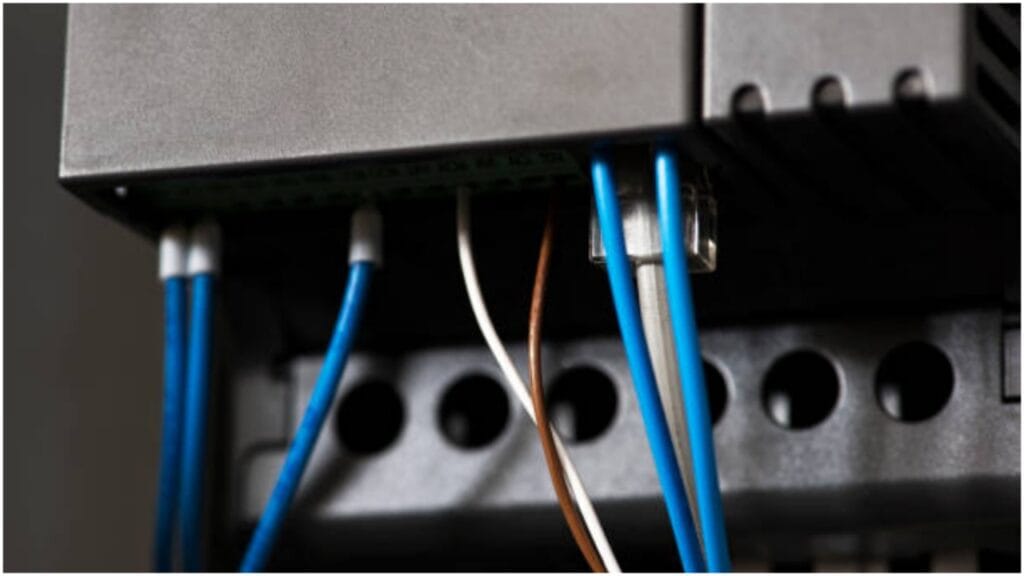There are several ways to achieve this connection if you want to connect a subwoofer to an amplifier without a dedicated subwoofer output (sub out). While many amps come with specific subwoofer outputs, not all amplifiers provide such an option.
You can still set up your subwoofer using a few alternative methods. Here’s a detailed guide on how to connect a subwoofer to an amp without a sub out.
Understanding the Problem
When amplifiers don’t include a subwoofer output, connecting a subwoofer might seem challenging. Subwoofers typically need a dedicated low-frequency signal, usually provided through a sub-out.
Amplifiers without this output may only have regular speaker or line-level outputs. This can complicate the process, but it can be made to work with the right tools and techniques.
Using a Y-Splitter Cable
A Y-splitter cable is one of the easiest methods to connect a subwoofer to an amplifier without a sub-out.
A Y-splitter splits the signal from your amp’s speaker outputs, allowing you to send it to both the subwoofer and your regular speakers.
How It Works
Connect a Y-splitter cable to the amplifier’s speaker terminals. The splitter has two ends: one for the regular speakers and one for the subwoofer.
This setup sends the same full-range signal to both the subwoofer and the speakers, but the subwoofer’s low-pass filter will only play the low frequencies.
Pros of Using a Y-Splitter
- Simple to Use: It’s a straightforward method requiring no advanced knowledge.
- Affordable: Y-splitter cables are inexpensive and can be found at most electronics stores.
- No Additional Gear: You don’t need extra equipment like external crossovers or amplifiers.
Cons of Using a Y-Splitter
- Full-Range Signal: Since the subwoofer receives the same full-range signal as the main speakers, it may pick up some high frequencies it’s not designed to handle.
- Potential Distortion: If the subwoofer isn’t properly filtered, you might hear distortion or unwanted noise.
Using a High-Level Input Adapter
Another effective way to connect a subwoofer to an amplifier without a sub-out is by using a high-level input adapter.
Some subwoofers can connect to high-level inputs, allowing you to tap the speaker output directly.
How It Works
High-level input adapters are typically used when your amplifier has only speaker-level outputs. The adapter connects to the speaker terminals on your amplifier, taking the signal and then sending it to the subwoofer.
Many subwoofers have dedicated terminals for high-level inputs, which will help you easily connect them.
Pros of Using a High-Level Input Adapter
- Cleaner Sound: This method allows you to send only the necessary signal to the subwoofer, reducing the risk of distortion.
- No Need for Sub Out: It works around the lack of a subwoofer output and still delivers excellent performance.
- Better Integration: By connecting directly to the speaker outputs, the subwoofer often integrates more seamlessly with the main speakers.
Cons of Using a High-Level Input Adapter
- Requires a Compatible Subwoofer: Not all subwoofers support high-level inputs, so this method might not be suitable for every setup.
- Potentially More Expensive: Some high-level input adapters and subwoofers with these inputs can be pricier than other solutions.
Using an Active Subwoofer with Built-In Amplification

Some subwoofers come with built-in amplifiers, which means you don’t necessarily need to rely on the amplifier’s subwoofer output. These types of subwoofers allow you to use regular line-level signals.
How It Works
The subwoofer has its amplification, so it doesn’t require a dedicated sub-out signal from the amplifier.
You can connect the subwoofer to the amplifier using a regular speaker wire. The subwoofer’s built-in amplifier will handle the amplification of the low frequencies.
Pros of Using an Active Subwoofer
- More straightforward Setup: With a built-in amp, the subwoofer can be connected directly to the amplifier without worrying about a dedicated sub out.
- Powerful Sound: Active subwoofers tend to produce more bass power since they have their amplifiers.
- Great for Limited Space: Since the subwoofer comes with its amp, you don’t need extra space for a separate external amplifier.
Cons of Using an Active Subwoofer
- More Expensive: Active subwoofers are typically more expensive than passive ones due to the built-in amplifier.
- Limited to Active Subwoofers: This method only works if you have a subwoofer with a built-in amplifier. Using a Dedicated External Crossover
You can use a dedicated external crossover to maintain a high-quality connection and filter the signal for your subwoofer.
This option is handy if working with an amplifier without a low-pass filter or subwoofer output.
How It Works
An external crossover device can be placed between the amplifier and the subwoofer. It separates the low-frequency signals (which go to the subwoofer) from the higher frequencies (which go to the main speakers), ensuring that only the appropriate signals are sent to each component.
Pros of Using a Dedicated External Crossover
- Better Control: You can fine-tune the crossover frequency to ensure the subwoofer plays the correct frequencies without interference.
- Improved Sound Quality: By using an external crossover, you avoid sending full-range signals to the subwoofer, which can reduce distortion and improve overall sound clarity.
Cons of Using a Dedicated External Crossover
- More Expensive: External crossovers add an extra cost to your setup.
- More Complicated Setup: To avoid sound issues, configure the crossover and ensure it’s properly tuned.
Conclusion
Connecting a subwoofer to an amplifier without a sub-out may seem like a challenging task, but there are various methods you can try.
Whether you choose a Y-splitter, a high-level input adapter, an active subwoofer, or an external crossover, each solution has its advantages and drawbacks. The best method depends on your specific amplifier, subwoofer, and sound preferences.
A Y-splitter might be your best bet if you aim for a simple, budget-friendly solution. If you want cleaner sound and better control over your subwoofer’s output, an external crossover or high-level input adapter might be the way to go.

